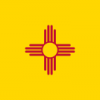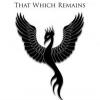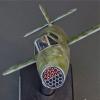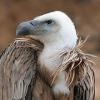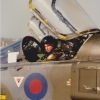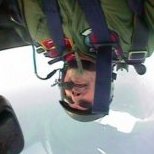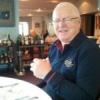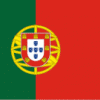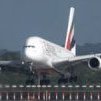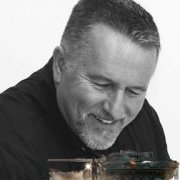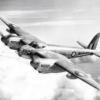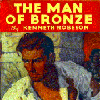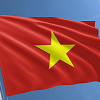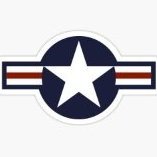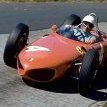Leaderboard
Popular Content
Showing content with the highest reputation on 25/04/17 in all areas
-
Hi folk's, number two of a mojo restoring trio of Hobbyboss easy kit's of the Hellcat,another blue scheme this time a French Navy machine,thank's for looking in.19 points
-
G'day All, This is my representation of the Wingnut Wings SE.5a "Hisso" as operated by 6 Sqn AFC in 1918. I didn't aim to have it finished on ANZAC Day but its a most appropriate day to do so. Built OOB except for the strap on the Lewis gun mag. All rigging was done using EZ Line. All painted with a hairy stick using Humbrol and Tamiya paints. I had a couple of goes doing the prop and I'm happy with it now. Not sure if the Bowden cable for the Lewis gun is that accurate but I will do me. Oh and if you don't break and re-attach the rudder at least 5 times...........well you are not trying hard enough!! Regards, Devo14 points
-
Hi everyone! This is my attempt at Revell's 1/48 PV-1 Ventura. Lots of mistakes, but I hope to have learned a bit more. Nonetheless I had a great time building it. Here are some pictures and thanks for looking! P1030640 by iBranco PT P1030626 by iBranco PT P1030627 by iBranco PT P1030638 by iBranco PT P1030640 by iBranco PT P1030641 by iBranco PT P1030643 by iBranco PT P1030647 by iBranco PT iuri12 points
-
I am not a fan of Heller kits,but this was bought by SHMBO for my birthday,so I decided to give it a bash.All paints were acrylic and were slapped on by hairy stick.The model loved the filler but I had fun doing it,this is a hobby after all. I need to to do a shake and bake kit now as I have run out of filler.11 points
-
Hi all, Below is my latest 1:32 scale model - Special Hobby - Nieuport 11 Bébé, Serial No. 576, of Escadrille N.67, during the period 1915-1916 and as flown by Jean Navarre. My build log (PDF format) can viewed or downloaded via the following link: http://igavh2.xara.hosting/index.htm This was no Wingnut kit by any means, and pushed my modelling skills more than normal. Jean Marie Dominique Navarre (8 August 1895 10 July 1919). Born on 8 August 1895 in Jouy-sur-Morin. Navarre earned Civil Pilot's Brevet No. 581 on 22 August 1911, which allowed him immediate entry into French military aviation in August 1914, when the World War One began. Navarre went on to gain 12 confirmed victories, three flying Morane Saulnier aircraft and nine flying Nieuport aircraft. During this period he became known as The Sentinal of Verdun, due to his habit of flying low over the French troops on the ground, which promoted morale at that time. On 17 June 1916, Navarre was shot down and sustained severe head injuries from which he never fully recovered. Navarre's younger brother was killed in a flying accident at about the same time. Navarre was removed from active duty and sent to a sanatorium to convalesce. Nearly two years later he would return to duty, although he would not again fly in combat. After the end of hostilities, a victory parade was planned on the Champs Élysées on 14 July 1919. However, the high command ordered airmen to participate on foot rather than flying their aircraft. The headstrong 'heroes of the air' took this as an insult. At a meeting in the 'Fouquet' bar on the Champs Élysées, they decided to respond to this affront by selecting one of their number to fly to Paris and through the Arc de Triomphe. Navarre, as the first among the aces, was considered the ideal choice despite his injuries. Tragically, however, while practicing for this stunt, Navarre was killed when his aircraft crashed at Villacoublay aerodrome on 10 July. He was only 23 years old. Fellow pilot Charles Godefroy would eventually perform the historic flight through the Arc de Triomphe a few weeks later.11 points
-
5 months later and plenty of mistakes. Was planning to take proper photos with a compact DLSR. But Snapseed (photo editing app) was so much fun 1/48 Meng P-51D with Kit decals, Eduard wheels & SuperFabric Seatbelts. cheers Shane11 points
-
Hi all, This was one of the last models I managed to finish in 2016, though it has been in very slow progress for about 5 years. It's the Hasegawa 1/48 TA-4J built to represent a TA-4J of the IDF/AF's Flying Tigers squadron. The build was basically OOB, only the extended exhaust from Quickboost and additional antennas from scratch. Markings came from Isradecal and Hobbycraft for the Shield of David. It's been an enjoyable build and I hope you enjoy the pics as much as I've enjoyed the journey. DSCN5475 by Aidy Abdullah, on Flickr DSCN5479 by Aidy Abdullah, on Flickr DSCN5478 by Aidy Abdullah, on Flickr DSCN5476 by Aidy Abdullah, on Flickr DSCN5480 by Aidy Abdullah, on Flickr10 points
-
A handy pal to have! Wracking my brains to try and work out what job your pal does that would have such singular pieces as leftovers: I'm inclined to believe that he builds very small nuclear generators for NASA space probes.... Paws vs. Claws! The funny thing is Keith that despite appearances, fowl and feline get on perfectly amicably out in the garden, and wander around in each other's company quite happily from one end of the day to the next. The hens do however possess an alarmingly Jurassic-sounding sqwauk that Little T might feel quite nostalgic about! Solid methodology to update you with this evening, rather than anything glamorous in the way of structural additions. First up a job I'd been tiptoeing around for fear of screwing it up at the last knockings - trimming the brass supports to follow the internal contour of the fuselage; in the final analysis it just needed a bit of forethought before cutting, using a pair of tweezers and some nail scissors, as even small pliers lacked the required delicacy and sharpness for 0.4mm tubing: Such parts can only really be glued to one side of the aircraft before joining the fuselage around it - the starboard framework you see here can be glued to the walls for added stability before closing up, the trick is to leave the port side just a tiny bit proud so that it will hold itself in place when this side is glued on. I'll stick a blob of Gator grip on the ends of those brass tubes where they meet the wall, so that it doesn't go off before I've had the chance to tape the fuselage halves together; you can see here what it will look like eventually in this dry-fit shot: For the remainder of the session I concentrated on starting to deckout the fuselage interior with the various panels, struts and boxes that freely adorn the walls. Be warned that a number of these structural details differ markedly between C-119 variants (eg. paratainer drops, troop ferrying, medevac and so forth), so of the many photos floating around the web you have to be clear that you're working from the correct variant/mission type. My initial attempt at drilling-out some of the (strengthening?) plates that can be seen up on the rear and forward parts of the cargo area were just embarrassingly inept, using an 0.8mm drill bit on lengths of 0.2mm strip: A subsequent attempt turned out somewhat better, though I found it problematic how drilling into such small strips has a tendency to deform the initial straightness of the length of plastic strip as you progressively drill along it. Not perfect, but certainly good enough for the limited perspectival viewing angle that these will be seen from in the final display: Next up were a couple of what look like circuit breaker boxes (none of the drawings in the Aerofax volume have such details shown or described unfortunately so you're stuck with my ill-informed guesswork as to function I'm afraid). These I built out of scrap plastic,and for the surface cabinet-like detailing I used the same process as previously aired on texturing the roof with foil, i.e., using a superimposed sets of foil rubbings from kit details - in this case the gun access panels from a Spitfire: A slight bevel was added to the edges of the boxes with a file as well, as per what can be seen in photos. Once in place they look convincing enough I think: That's it for the noo. Out for a lunchtime walk with Mrs. B the sun broke through and turned the foliage a radiant green: It made me realize just how hungry I'd become for sunlight, like the trees themselves. I think I'd miss that green on Mars. Tony9 points
-
Revells 1/72 horton ho 229. build out of the box, went together well. did a 'lo-viz' scheme, overall RLM 76 with a light squiggle of RLM 02 on top. decals are revell and left over airfix. thanks for looking9 points
-
Morning folk's a mojo restorer in the form of Hobbyboss Hellcat,love them or hate them they are cheap and look like what they are meant to represent albeit with their inaccuracies the expert's will spot them but with my limited knowledge the small wheels were the most obvious but for newbies or anyone just wanting to experiment with paint and weathering they are ideal.Thank.s for looking in.8 points
-
Rescued from the Shelf Of Doom. It kievs there for almost three years. But here it is, OOB with Xtradecals. VA-216 Black Diamonds jet.8 points
-
Bill [I'm assuming you mean either Type 12 or Type 21, though isn't your Wopse Achilles'? In which case Leander...] Anyway... Could be either chains or nylon lashings with equal plausibility. For my scenario - cab in Fly 1 (alongside the island), fully buttoned up for the night with ECU blanks at both ends, folded tail and Forth Road Bridge gear, then chains are more realistic cos the FRB would only be fitted for a prolonged stay, like overnight. If the aircraft were parked there for a shorter time they'd probably only fit tip socks, and they wouldn't fold the tail if they could get away without - and in that position nylon lashings are plausible, cos it might only be there for a few minutes. A Wasp simply wouldn't be left on deck overnight; a frigate deck is much too exposed and low to the sea, so the poor thing would get majorly goffered (hit by a wave), which doesn't do aircraft any good at all. They were regularly lashed down on deck, of course, for a while - and if that while was likely to be a longish one, they sometimes moved the cab forward until its nose was just inside the hangar and only approx the rotor head backwards exposed to the elements. Standard would be eight nylon lashings, going down to four for a relatively short period as the aircrew manned up (unless it was very rough). In the hangar, 4 to 8 chains to supplement the nylons, depending on the weather and forecast weather. In short, I think you would be perfectly justified in only modelling nylon lashings, which are the white, flat ones (at least they start off that colour!) - as it might be, made from strips of lead or masking tape. 1/72 chain lashings would be really hard to do, and anyway your aircraft would not look odd without them. Examples: 8 nylons (my Broadsword cab on RFA Tidespring in 1990, parked cross deck to avoid fouling the spot for other aircraft - and anyway our second cab is in the hangar)) 4 nylons (same aircraft, but this time in the middle of changing a Main Rotor Gear Box at Ascension Island) - the harpoon deck lock would have been engaged - not an option on an RFA - and you can also see that the "Mangler" has been left attached to the nose wheel). Yours truly leaning against the aircraft. Sea King 6 nylons (could be 8, but I can only see 2 at the back end); Toom lots of chains! Nearest Junglie cab 8 nylons; Flight Deck Crane and another HU4 in Fly One with chains - Ark at a buoy in Greenwich (long after my time). [Those of you who followed the - as yet not fully resolved - saga of the hugely overscale Airfix crane in my Ark build will understand why I have this picture to hand!]8 points
-
Finished, This kit was sitting on the Shelf of Doom for several months in basic primer. I had a couple of hours to my self so I pressed on. Great little kit and a blast to build and paint. I've started a little base for it, nothing fancy. Nice to know I got another one off the Shelf of Doom I hope you like it. Dan7 points
-
The is the “Mistercraft” MiG-19S, which I think is a copy of the old KP kit albeit with recessed rather than raised panel lines and moulded in a strange soapy plastic. I built this partly because I think the MiG-19 is a classic Cold War design but also because I wanted to try out some of the new(ish) Vallejo metal colours before trying them out on something less "disposable". That said, I couldn't stop myself from adding Extratech details (designed for the Bilek kits but some elements are useful), a Pavla cockpit, and the Master air data probe & gun barrels (beautiful pieces of casting). The overall shape of the Mistercraft/KP kit isn’t bad but the following are some of the adjustments I made to try to get it a little closer: · Reduce thickness of all trailing edges and wing fences · Add jet pipes and reshape the ‘pen nib’ fairing · Delete forward small intake from the fin · Add gun blast squares · Open up the nose intake and build up the internal structure · Reduce the span of the tailplanes by about 2.5 mm each side · Drill out and glaze the landing light · Fill the side airbrakes and replace · Build up the profile of the nose intake to reduce the prominence of the gun camera · Extend and re-shape the rear fillet of the wing root · Reprofile the spine at the rear of the cockpit · Reduce the chord of the fin leading edge · Lengthen the fuel tank pylons · Replace/rebuild the mainwheels with 9mm diameter substitutes (the hubs are scratchbuilt and still not perfect, but better) · Add an additional member to each main landing gear · Rebuild the nose landing gear (6mm diameter wheel) – mine includes elements from a F-8 Crusader plus Albion Alloy tubing · Plus an awful lot of fill-sand-shape repeat! The kit decals were out of register so the markings are from the spares box (Bilek MiG-19PM for the Czech national markings and KP MiG-21MF for some of the numbers). By the way, one thing to watch is that the kit has the long fin fillet, so is not suitable for the early batch Czech MiG-19s (S-105s) with serials in the 01xx and 02xx series. There is most definitely a need for a decent MiG-19/J-6 in 1/72 scale (I bear the scars of having previously fought the Bilek MiG-19PM into submission) but I was pretty pleased with how the Vallejo metallics worked out; by the way, there is more lustre and contrast between the panels than the photos bring out.7 points
-
That sounds like my schooling at St Phil's to a tee H I was so bad I didn't even fail We parted company under equally unsatisfactory terms before I had to... (In later years, especially recently, I wish I'd gone in that day more often. Far too easy if you have the application to fail at youth as well as in later years) As we are talking 'small' I did find my 'beer mat' template just to have a giggle en piste Note beer can for scale, I couldn't find the beer mat Looks oversized at the hinged section oooooh dear hmm, perspective's a lady dog isn't it Looks better further away It has to fit all round on the template Okayyy seems -ish Free and gratuitous advertising for British Red Cross Christmas appeal, I think that is OK in the scheme of things As we can see, "The Troupe de Mlle EGLANTINE" completes three sides within the box but I won't show the front wall You wouldn't be able to see the jollychopter but it all fits nicely Phew7 points
-
The mini-est of mini updates - just to show Bill that I too am still broadcasting; and to riposte à hendie (this only makes sense if you're familiar with Bill's Wopsie thread I'm afraid....) Begun the detailed painting on the seats with the yellow of the hard PSP (personal survival pack) seat base - it's mostly covered with a black cushion so only a glimpse of the sides here and there is visible: I plan to have the the two rear seats fitted with solo flight aprons which'll cover all this work - but I figure that if I detail paint all four of them then I increase the chance of two of them being half decent And I've spent some time prepping some canopy components ready to make a silicone mould from: I vacc'd a test canopy a long time back - but I think I can do better. Once I've got a silicone mould I'll cast some resin - and maybe plaster - copies to use as male masters. I've found that resin masters tend to discolour clear vac formed sheet (but also found that if you do a few you stand a chance of getting one that hasn't discoloured) hence I thought I'd give plaster a go. Any better suggestions gratefully received.... There - not much done - but something!7 points
-
Hello everyone! This is my first build on the site, in fact, it's my first aircraft build in a very long time (i.e., over three decades). There has been enormous progress in the hobby since then -- the technology and techniques available to modelers today are amazing and I have much to learn. I thought the best approach would be to do a "practice build", and decided on this venerable kit: I remember building this when it first came out, sometime around 1972 (!!!). Back then my modeling toolbox consisted of a couple of X-acto knives, some files, sandpaper, and putty. I owned an airbrush but couldn't afford an air compressor on a student's budget, so I used Badger Propel cans instead. Modeling techniques I used for the first time include: Resin and photoetch aftermarket items, scribing, proper airbrushing (goodbye Propel), pre-shading, Blue-Tack camouflage masking, and simple weathering (e.g., pin washes). Before getting to the finished product, here are some of the items I used in my build: Whoever invented this gadget deserves a medal: On to the final result after three weeks of work: All in all, I'm quite happy with how this turned out, even though there were mistakes along the way and there's much room for improvement. Nonetheless, this is definitely the best looking Rhino I've ever built, and I learned a lot that I'll apply to my next build. Thanks to everyone who encouraged me along the way, and for the helpful tips & words of advice.6 points
-
Hello guys; I finished another Hellcat 1/72. This is an Italeri 1/72 that I worked together an Eduard kit. This kit has a complicated built, but the final result is a reasonable Hellcat. I chose this famous FAA version. Thank's for watching! And here, this Mk.I together with the last Eduard Hellcat. Regards;6 points
-
Thank you kind sirs. Got walkway lines and anti-glare patch masked on the Mk 24. And then a varied coat of Alclad Semi-matt Aluminum. Followed by some post shading with Vallejo Metal Color Semi-matt Aluminum and White Aluminum. I usually don't do any varnishing with metallic finishes, but I think I'm going to risk it this time - I think a Satin finish would match the reference pics I've seen better than leaving it as is. Also, the Semi-matt Aluminum doesn't have the glossy smooth texture of a 'true' NMF, which led to decal problems on the Eduard LF.16 from the previous trio. Six wheels and fifteen propeller blades masked up and painted. Revealed. The wheels will need some cleanup - they always do. Closeup of the Mk 24's undercarriage doors. The doors on the right have been swiped from a Special Hobby boxing to match the later ones fitted to Mk 24's. I've also decded to go with silver on the wells and interior portions of the gear doors, as the reference pics I've seen seem to show silver. The Mk 24 I'm planning on building arrived in Hong Kong wearing a DFS camo scheme, but was painted silver somewhere along the way, and it stands to reason that the gear wells got a coat too.6 points
-
Evening, Ive also recently put this one to bed. It's a lovely kit - fits brilliantly, and the detail is top notch. Everything is OOB, and the finish is Tamiya decanted rattle can silver. This particular example shouldn't have the radio aerial - but I conveniently ignored that fact, as I like the look. The eagle eyed will note the wing pitot is missing - thats 'cus i just realised I've forgotten to add it! Anyway - onto the pics. Comments welcome from all opinions as ever. And with its partner from the JAAF.... Cheers Jonners6 points
-
That grim news I was endeavouring to pass on paled in significance when I read PCs Gauntlet thread, his news was grim, mine wasn't I was trying to overcome a reluctance of my home brew decals to conform to the surfaces I wanted them to I decided to look at the problem laterally after Ink-thingy seems to have lost some of the tools I used to use I have experimentally cut a lateral slice of the DAN markings (in this case a slice of GER instead) from one of the old decals I made off the Airfix ones complete with their orangey red I cut along the lateral rib line (natch) and tried it out on the tail I got it to conform to my badly shaped tail ribs (OK not MINE, the ones on the model, I'll thank you not to comment on MY badly formed tail ribs) and it seemed worthy of a go using my last few complete home brew mk 2s First clean the surface to allow clean application A couple of overzealous nibs of RAFBG sliced off here and there And slice one applied ready for tidying then slice two bunged on under the spline and jiggled about ready for Clear-ing, not quite in line here but there is a cunning plan Over there, no don't look! Doh, I'll show you later The DANGER flash has to be cut to allow the extra length taken up by the hinge lock and hinge pins to be included so I was running out of ready mades This is where the remnants outnumber the full ones which was why I experimented with the orangey ones first, you can see the orange here against the proper red ones. Only three uncut ones and lots of plastic (relatively) to cover I was reluctant to print more of these just to have them languish in the transfers folder unused Here's a timely size check and the two remaining uncut decalcomanies to go on the port side now the starboard is satisfactorily 'done' The size check is to prove I usually only have normal sized cocktail sticks available for sizing against Well that looks OKish Acrylic (Vallejo) paint will be used to pick out the minor adjustments needed now, their scarlet is pretty close to the colour I colour adjusted for the DANGERs This is close enough in this scale I reckon, without adding even more of the blue it really needs As we say playing cards, STICK! As I now have the tail fully decalled my bogey-job came along next The hinged round tail rotor pylon I have been bricking this bit but the day has dawned Jeeves oiled into the build-suite with the UV Glue stick firmly grasped in his white gloved hand "This is the time to retry this resin sir, I am certain that with a little firm application you will be able to join the hinges to the tail end" He placed a small dry sherry alongside, rather than my customary pint of rough Cidre de Normande "I understand a small celebratory libation to be in order after satisfactory completion of this task. If you will excuse me I have to retire to enter this weekend's, hmm, improvements into the Gentleman's Gentleman Club Journal which you will remember it is a matter of honour for me to maintain" Upon which he oiled out again I could have used his steadying hand to gently grip the pylon whilst I gripped the model by the tail and readied the UV torch and applied a small blob to the upper hinge portion, but the task went well anyway I held both items together manually and applied the UV light orally, gripping the bally thing in my teeth and pointing blue-ness whilst counting the seconds The second, lower hinge application was less threatening praise be and resin hardening happened in a trice... or maybe two, I was reluctant to have it all let go after that NOW I can attend to the flotation gear and finally the rotor support frame, the Forth Road Bridge thingy (and indeed the torpedoes) Where did I leave that beermat? ciao chapses6 points
-
Port sponson continued... (as I said, it takes patience because you have to build up the more complex bits slowly): Answering those two questions (which I have only just seen), I plan to subdue them somewhat - but not that much; seen from a reasonable distance (as opposed to in close up in a photo) they don't look as stark. They are raised - proud of the surface - but only a tiny amount. If you run your finger along a row, you can certainly feel them, but they are (I would guess) pretty much in scale, so we're not talking massive bumps here. More soon Crisp P.S. Maybe a better perspective of how prominent the rivets are; this photo was taken on an iPhone 7 from between 18" and 2' away.6 points
-
While we are at it here are some more of 'Tone's Top Tips' for a lush spitfire build. The bit in the instructions where you close the fuselage up is a bit busy, what with the cockpit going in and the strengthening bulkheads in the nose. Lots of room for error. One might add the said bulkheads to one of the halves first which then with the tiniest margin of error could throw the whole thing off. To me the join in the fuel tank takes priority (for a good finish), so this is how I do mine... So you have all seen that I did the cockpit sidewalls as part of the fuselage, perfect alignment and no build up of paint, and then the floor/seat and its armour as a sub-assy. Note that part where floor will join had maskol on it, (now removed), as paint build up can widen this area which then pushes down the dihedral etc etc... Seat has the lap belts and first strap added, then joined to fuselage for the second shoulder straps. Next is clean up of any paint from mating surfaces, a light pass with the sanding stick. Also this slight roughness helps to fill the seams when using a capillary type cement as mentioned a few posts back. Points to note - the £1 for 4 primark nail file 'sanding sticks'. Two grades on them - the bargain of the era. Below are two left halves (seat sub assy in on right halves) - the rear half still to be cleaned up (note darker edges) Front half has had its edges cleaned up (now lighter shade of grey plastic) Next I align and glue the halves together top and bottom aft of the cockipt only. A slight squeeze with the extra thin and a minute bead wells up along join eliminating filler later on hopefully. Next the strengthening bulkheads are dropped in and allowed to 'float' held in by friction, the nose area is pretty flexible still as its only glued rear of the pit remember... Next, we squeeze and glue the tank armour in perfect alignment, trapping the bulkheads below where they suit the join above best. note the timy self filling bead that has oozed up... When the join has set a while we then move up the bulkheads as close as we can get them then run some extra thin around those, from this - to then this - Now clamped up while it all sets... Hope this all saves someone some headaches 👍🏿6 points
-
This is IBG's newish release of the Polish Rosomak APC, which is really just a licence built version of the Finnish Patria. It's a very nice kit, with a pretty much full interior supplied, although hardly any of it can be seen, even with all the hatches open. The fit was great and the detailing's good. The wheels/tyres in particular were nice, being all styrene, so much easier to paint and weather than the usual soft vinyl type. Not the most inspiring of colour schemes, and the weathering's a bit bland, but it's pretty representative of how they looked when they were operating in Chad. Thanks for looking Andy5 points
-
Finally got this one finished. This was a very nice kit, wonderful detail, but with some fit issues along the way. Despite that, everything else went fairly smooth, minus numerous errors in the instructions. This kit is by far the best Mig-29 out there. I'd recommend this to modelers with some experience, not beginners. Everything was out of box, minus a metal pitot tube and aftermarket decals from Linden Hill. I used Akan paints, which were absolutely wonderful. Enjoy.5 points
-
Thanks John. I rummaged through the stash and came up with a few options: tip tanks from a Sword F-80 or Ehmar F-94, and Revell Hunter drop tanks. I'll probably go with the P-80 or Hunter tanks as their absence will not prevent those kits from being built in their planned configurations. The F-94 tanks are probably best, but I want to keep them available for their own kit. And now a brief interlude regarding experiments and decisions about how to achieve the required natural metal finish on the B-57. As always, feel free to skip ahead if you don't have any interest in NMF's. I've been experimenting for a couple years now, and my favorite method so far for achieving an NMF is to brush/buff Model Master metalizers directly onto the kit plastic. Unfortunately, the surgery required on the B-57 will make this method impractical, and lots of filler and primer coats will likely be required (the MM lacquer eats through every primer I've tried with the brush/buff method), so a more 'conventional' approach will be needed. With that in mind, I recently experimented with Alclad Aluminum and Airframe Aluminum - my first foray into 'high shine' Alclad having previously only used their Semi-matt Aluminum to represent High Speed Silver. To begin the experiment/practice I sprayed a spare Academy P-51 fuselage with black Stynylrez followed by an acrylic gloss black. Then sprayed the Alclad - forward and rear panels in Aluminum and middle panels in Airframe Aluminum. Here is the result compared to MM metalizer builds (embarrassing fingerprint strategically placed away from the camera). I found that the Alclad lived up to its temperamental reputation, but I think it's possible to get a good result with my current airbrushing skill set. Just to see what would happen (Official Britmodeller [by way of @The Spadgent] motto: "Try stuff until it works"), I sprayed some onto the bare plastic on the other side. Not bad at all, almost as nice as brushed metalizer. And here it is sprayed on a Testor's lid that the Alclad now resides in, as I broke its flimsy plastic cap. I guess if I was able to prep plastic as well as Testors preps metal caps the results would be stunning, but probably too smooth. Another option is Uschi pigments, which are incredibly shiny and also follow the required 'primer, gloss coat, metal coat' method. [photo lost in Photobucket transfer] Same build with the Uschi toned down. The third option is AK Xtreme metal. It's much more forgiving than Alclad, but I only have one shade (the lighter shade above is foil), and it's expensive. It's a lower risk, lower reward option. It's easy to use but doesn't look as nice as Alclad or Uschi in my opinion. Well, there it is - I'll try not to drone on this much about 'metallics' in the future. Any suggestions, opinions or corrections are much appreciated.5 points
-
-This another of Mr Paul COUDEYRETTE model, the Monogramm 1/48 old B 58 kit, He is spenting a few holidays in Spain but he have seen your comments about his F 100, he thanks gratfully everybody for their comments on his model . Now the Hustler...... -Enjoy...5 points
-
Thanks Brian! That's a very kind offer and I'd certainly love to come up and have a look around - a PM will be sent! (I hope you don't regret the offer!) Thanks Stew, Cookie, Simon and Rob - you're all very kind at it never ceases to amaze me how fellow BMers sense a mojo loss and gather round to provide support. great stuff, thanks mates. With renewed mojo I decided to take on the next problem... this fits: and this fits: more or less BUT - and it's a big but (sorry, I never tire of that one) : Zaggen razzen fraggen i/p. I tried to dry fit it, held in place with BluTak (Giorgio in my head) and with latex glue (Copydex) but no dice - too small a join. I like the latex glue because it peels off without damage: but it wasn't strong enough, or quick-drying enough, to hold the part in place so I remembered the advice from BM that CA will shear off (I use that when glueing parts to sticks for painting) so I've put a small drop on: I'll let you know how the fitting goes later but i think I can get the pilots legs under there and the canopy on. Besides, I think that location is much better than the kit build that would have the i/p under the fuselage lip.5 points
-
80 editions into the 100 sets I've had to stall my work as DeAgostini wont release the remaining 20 editions ahead of my subscription which is really annoying as I cant really get on and get the paint work and weathering done until the whole hull top and bottom is built. I am not a Millennium Falcon detail specialist so this is a new learn for me - these are some build shots that show how the frame assembles and how I have started to paint my lower and part top sections ahead of the final assembly and weathering stages. This is the first Falcon build for me so it really is a new experience for me and certainly in a scale that offers no prisoners when it comes to detail. It carries a high price tag but the quality and sheer size makes its a good spread out purchase overall (IMHO). I had 4 new editions arrive yesterday but I think I will now just wait a few more months before I go any further on this as I now have a Hoth scene up on the benches. metal skeleton under assembly one of the kit upper parts set aside the belly primed hull I have under way the belly prior to any detailing and weathering - on a Tamiya base grey primer my own part weathered cockpit corridor the original 1/32 Studio Falcon used in ESB and ROTJ taken at the UK London Star Wars Identities exhibition4 points
-
4 points
-
New here. This is a TR6 I built as a surprise gift for a friend. Body and wheels cut from a block of RenShape. Everything else handmade. Hope you like it4 points
-
Hi, Some photos of my recent project: the Buyan-M Class Corvette, Project 21631 from YG Model at 1/700 scale available from NNT Modell: https://c1.staticflickr.com/3/2821/34101867132_4e7fd90629_o.jpg https://c1.staticflickr.com/3/2892/34101866682_04d962a8cb_o.jpg https://c1.staticflickr.com/3/2892/34101866682_04d962a8cb_o.jpg More photos available at the following link: https://www.facebook.com/pg/AyalaBottoModelShips/photos/?tab=album&album_id=744871065687743 Hope you like it. Thanks. Regards, Ayala Botto4 points
-
Good morning! As stress relief from the god-awful Revell Mosquito I decided to build a Tamiya kit and chose the Beaufighter TF.X. Loosing sight of my plan for a nice easy build I added the following: Aires resin cockpit Changed Elevators to the correct earlier style and added droop Added the internal exhaust pipes and braces to the engine cowlings Quickboost hedgehog exhausts plus stretched sprue braces Internally detailed the navigators station to match the cockpit Scratch built Yagi/Rebecca aerial and bomb rack Rescribed the wings to represent the gun panels and dingy stowage Plated over the landing light Doped fabric over the cannon ports and wing guns as well as deleting the extra set of ejection ports Rockets pinched from a Tamiya Mosquito to replace the pitiful kit items, arming cables and plugs added Xtradecals decals Paints were by Vallejo and final flat coat by Windsor and Newton. There is some confusion as to wether this a/c had the serial NE425 or 825 but since I did not have any suitable decals to change this I stuck with Xtradecals' NE425. Coastal Command's early 'pimp-my-Beaufighter' configuration with bomb racks, rocket rails and the ASV aerial certainly makes for a busy looking model! Thanks for looking, Chris EDIT: Here are some photos showing the cockpit and elevator mods:4 points
-
Hello All, After several years on the shelf of shame, my Matchbox/Revell Privateer is done. It has been converted to the Coastguard version and the next time I see him it is going to a pal of mine. His Dad flew in these back in the day. The conversion involved replacing the side gun turrets and with big picture windows and replacing front and rear turrets with observation canopies. I also added interior framing (mostly now invisible) wheel well detail, exhausts and some other minor engine detail. I could have done more accurisation and improvement, most notably the air intakes around the cowling and the propellers, but it isn't appropriate for a desktop model (and would have taken another two years at my rate). This is my first 4 engine "heavy" and my biggest model ever. My wife's only comment on it has been "It's very big isn't it" so I think she's quite happy it's going to my pal's house! The insignia are from an aftermarket sheet but all the lettering, coastguard emblems and engine grilles are all laser-printed onto clear decal paper. The "DANGER" lettering was applied on top of scrap white decal squares and the coastguard logo was applied over a spot of white paint to deal with the transparency issues. Pics: Thanks for looking, Adrian4 points
-
1/32 Revell Eurofighter Typhoon 10 Years in German Air Force TLG 73 "Steinhoff The Eurofighter Typhoon is a twin-engine, canard-delta wing, multirole fighter.[7][8] The Typhoon was designed and is manufactured by a consortium of Alenia Aermacchi (Leonardo since 2017), Airbus Group, and BAE Systems that conducts the majority of the project through a joint holding company, Eurofighter Jagdflugzeug GmbH formed in 1986. NATO Eurofighter and Tornado Management Agency manages the project and is the prime customer.[9] The aircraft's development effectively began in 1983 with the Future European Fighter Aircraft programme, a multinational collaboration among the UK, Germany, France, Italy, and Spain. Disagreements over design authority and operational requirements led France to leave the consortium to develop the Dassault Rafale independently. A technology demonstration aircraft, the British Aerospace EAP, first took flight on 6 August 1986; the first prototype of the finalised Eurofighter made its first flight on 27 March 1994. The aircraft's name, Typhoon, was adopted in September 1998; the first production contracts were also signed that year. Political issues in the partner nations significantly protracted the Typhoon's development; the sudden end of the Cold War reduced European demand for fighter aircraft, and debate existed over the aircraft's cost and work share. The Typhoon entered operational service in 2003; it has entered service with the air forces of Austria, Italy, Germany, the United Kingdom, Spain, and Saudi Arabia. The air forces of Oman and Kuwait are export customers, bringing the procurement total to 599 aircraft as of 2016. The Eurofighter Typhoon is a highly agile aircraft, designed to be a supremely effective dogfighter in combat.[10] Later production aircraft have been increasingly better equipped to undertake air-to-surface strike missions and to be compatible with an increasing number of different armaments and equipment, including Storm Shadow and the RAF's Brimstone. The Typhoon had its combat debut during the 2011 military intervention in Libya with the Royal Air Force and the Italian Air Force, performing aerial reconnaissance and ground-strike missions. The type has also taken primary responsibility for air-defence duties for the majority of customer nations. On 26th of April 2004, the introduction of the first seven double seated Eurofighters to the Jagdgeschwader 73, JG 73 (Fighter Wing) started and the former F-4 squadron was reactivated again as EF 2000 training and operational conversion squadron. Therefore, Laage was unique as first EF 2000 Eurofighter unit within the German Luftwaffe. On 23rc1of August 2014 the now named Taktisches Luftwaffengeschwader 73 "Steinhoff', TaktLwG 73 "S" (Tactical Air Force Wing 73) celebrated 10 years with Eurofighter with an Open Day. For this event the EF 2000 30+47 was decorated with a special painted tail. On the right side the 10 years are positioned in front of an Eurofighter silhouette. The crane as well as the lighthouse and the famous "Teepott" This is Revell’s 1/32 twin seat converted to single seat, built with the resin cockpit, and engine cans, the pilot is resin, everything else is OTB. The kit went together as you would expect from Revell, some bits are ok others need the delicate touch of filler and TLC All painted with the HATAK paints, and the decals are from model makers Enjoy4 points
-
This is Kinetic's F-16 in Norwegian markings from Vingtor. I tried to build this kit about 4 years ago and you can see how well that went here: But after seeing the occasional picture of the real thing made me want to try again, because I really really like this colour scheme. So here is the build thread for the new one: And now the pictures. Comments and criticism welcome. Sean4 points
-
4 points
-
Hi all sailors! This is my rendition of the IJN Myoko at the Battle of the Java sea. I have used the Flyhawk set plus numerous accessories from veteran, lion's roar and GMP. Best regards, jean.4 points
-
Ah well m'lud, I draws yer attention to a previous post Roger This assembly is going to hold the blades in check so I do hope the answer is "OF COURSE" In reality, I simply hope so This forenoon I took Waspie and the HAS3 Wessex into the garage for fun and games because the good lady wife has 'gone to town' to meet a buddy Ladies who lunch huh? I have re-redded the rotor frame with the Vallejo Scarlet. It is a little bit less red/orangey than the Humbrol Matt Red which seems a bit more orangey, I might still knock the shade back a bit with Tamiya Smoke, we'll have to see later I also took the opportunity to touch up some of the RAFBG with a brush, we're far too deep in now for me to risk airbrushed updates like Steve and you others can do, so it is wot it is Brushing time I also took the opportunity to spray another layer of stupid yellow over the Wessex's upperworks I think yellow is the best colour in the world to airbrush, always such a satisfactory coverage and smoothness guaranteed OOOOOPS I told a wopsie, a veritable whopper, stupid exaggeration or just a plain lie I detest Yellow and promise here before the jury of my peers that this Wessex, if it ever gets finished without being Humphreyed, will be the last predominantly Yellow airframe I'll ever tackle I'm old, it is a pretty safe bet Anyway, I've tried Sovereign's Yellow enamel I've tried Vallejo's Yellow acrylics Back a while I tried Xtracolor enamels I hate 'em all with a vicious vengeance So I had to try something else Do I nip out and buy a Tamiya rattle can, or something like from Halford's range? No I have a pot of Humbrol Acrylics Yellow, a bottle of Daler-Rowney Flow Improver and my cheapo twelve quid Chinese airbrush About maybe, twenty percent Flow Improver in the mixer with the yellow paint, no thinners Stir three or four minutes with one of the true scale ® cocktail sticks and go It is still too untouchable for moving upstairs into the modelling suite but coverage looks good, which surprised me because Hendie has said he's had no luck at all with Humbrol's acrylics So that out of the way I also sprayed the upper surface of the Wessex rotor blades NATO Dark Green 'Primer'? from Vallejo Looks quite nice So such tasks out of the way leaves me clear to start building the jury frame and flotation gear on Waspie when the enamel becomes handleable I have torpedoes to paint too, does silver tails and dark (NATO) green bodies with yellow stripes sound about right? And why would an antisubmarine helicopter carry a dumb depth charge and a homing torpedo on the same sortie? Furthermore does anyone know the diameter of the deck landing circles on Type 22s? I'm guessing fifteen feet, it doesnt seem much bigger than twice the wheelbase in some pictures I've seen4 points
-
Thanks! Orks are apparently really into triangles and checks, but only triangles are easy to paint I chipped the green paint on the dome and tank - I was able to remove most of the overspray this way, but then had to rinse the foamy paint residue off under the tap so it was a bit fragile until it dried again. When I came to chip the panels I had to be super careful, but it was possible to see what would happen by looking for relief in the paint. The big tank got a couple of extra big chips on the rim/cap when I picked it up with what I thought was excessive care! I'll leave it 24h before carrying on and be careful with the wetter layers! Cheers, Will4 points
-
Fascinating,......I had wondered about the colours quite a few years ago when I saw that colour photo of EH-B further up and corresponded with Peter Malone about it,...... that film of 30 Sqn RAAF is brilliant,..never seen that before. I did read that 30 Sqn had repainted some of its Beau`s in green/brown as they disliked the `coastal' colours,....but whether that is accurate or not I just don`t know. I`ve done quite a few RAAF Beau models and I`m quite happy with the colours on this one; and this one; BUT,..... This one I`m not too sure about, having built it some years ago when I was unsure about whether it was TSS or TLS and eventually opted for the latter when I read about the possible repainting,...with the dome behind the cockpit I`m aware that it should be a Mk.Ic, but weren`t early ones delivered in TLS too?; If anybody can comment that would be great as I`m pondering whether to repaint this last one! Sorry for hijacking the thread with my own personal query, Cheers Tony4 points
-
Last one on the topic of nose bulkheads... Drilling a hole into the vertical part as shown allows for a skewer to be used as a handle for overall painting of primer/varnishes. Plus then with a toothpick in the tail wheel slot and a helping hands thingymajig sans magnifying glass also for camo work and decals 👍🏿4 points
-
Sorry for the lack of progress guys, been busy with this trumpyboss 1/32 109g2 past week or so.... Coming to an RFI soon near you... anyways back to why we are here: spitfires! proof of some progress made with the sextet inbetween sessions on the above - we now have six airframes ready for seam work/spot priming etc. note - the turkey (turk E - geddit?) is further along, as this is when I first set about doing them in pairs after all the cockpits were done. Next furthest/part of the initial pair was the greasy (greek C)... Too far? I'll get my coat.4 points
-
3 points
-
Quick update, MiG has been on a test flight with some decals and weathering to boot...first attempt at it be kind please3 points
-
3 points
-
I could find my happiness: a 4,91 mm diameter gasket, that will be a quite good ring for the crank: I have cemented the kit's backseat (deeply modified as shown earlier) on the back of my driver, using the 2008 Cyberbond cyano (special rubber): The same cyano was used to cement my joint (cut to fit well). I applied gently the cement on the whole gasket, to harden it (necessary condition to paint it). I had used the same technique to harden the soft kit's magnetos (Robin used another solution, scratchbuilding them):3 points
-
Revell 1/48 Hs129B2 in Tunisian desert camo over standard RLM splinter scheme. Built with Eduard photo etch. First time using photo etch, salting, chipping,pre shading and panel washes. Quite happy with how its turned out, learned a few things which I've used on he next models. Enjoy!3 points
-
Thanks alot Kev had a break which was brilliant Loved how the guns came out, and yes I sure do like the Sherline lathe, taught how to use one back in Poole Dorset many years ago Thanks again Stix Hi Jens have bought a lot from the car details sites, and because I like to build in 1:24 scale you can find almost all the items you require Thanks very much Julian, I think that the small details bring out the model, would love to see a pic of your Typhoon Regards Richard3 points
-
I can sympathize. I'd almost think I'd been channelling @perdus 'crazed red spider' (in hendie's memorable phrase): My own brass maze is not exactly easy to follow - especially with some of the laterals not yet trimmed down to fit inside the fuselage - so I've had Hugh Scully and the Antiques Roadshow team in to provide an expert guide to the item: Verdict: 'Poss. 16th Century, School of Cellini. Incomplete. Brass blunnions with perpendicular cross-spelters; unusual spaggered escutcheon on the lowest crespule.' Value: Uncertain. A similar item recently went for several pence at a car boot sale in Norwich. Now. To other corespondence. . My eldest is 17 and barely leaves the bed, let alone the house at weekends.... I'm rather fancying those refillable pencil blowtorches that Bill mentioned in his post above - they look very handy for the scale. Thanks hendie. A bit of trimming down needed to get it to fit into the fuselage but at least I'm happy the brass-parts are strong enough to put up with a little pruning. Cheers for that amigo. I celebrated being booze-less for a week last night by having a substantive bottle of Normandy cider at supper and can report sleeping equally as well as the previous night. I reckon that's a vote for your mental attitude/physical state diagnosis Ced! You're my kind of physician. Hmm. That unfortunately reminds me that I'm overdue for ringing my local GP in order to obtain the results of my recent bloodwork vis-a-vis cholesterol levels. I'm expecting him to say very good progress eat more cheese and wine that I need to bring a bucket to the chemist in future to collect the necessary dose of statins. Thanks Tomo. I believe in the UK you may be able to obtain FCCs in Iceland. I did try making them myself once but mine came out too healthy and lacking in grease. They just didn't taste right. On this showing I am an inadequate underachiever and must spend more money immediately. To be more accurate, dreams full of how I'm going to pay for the required tonnage of brass toobs if this soldering obsessions persists...3 points
This leaderboard is set to London/GMT+01:00




